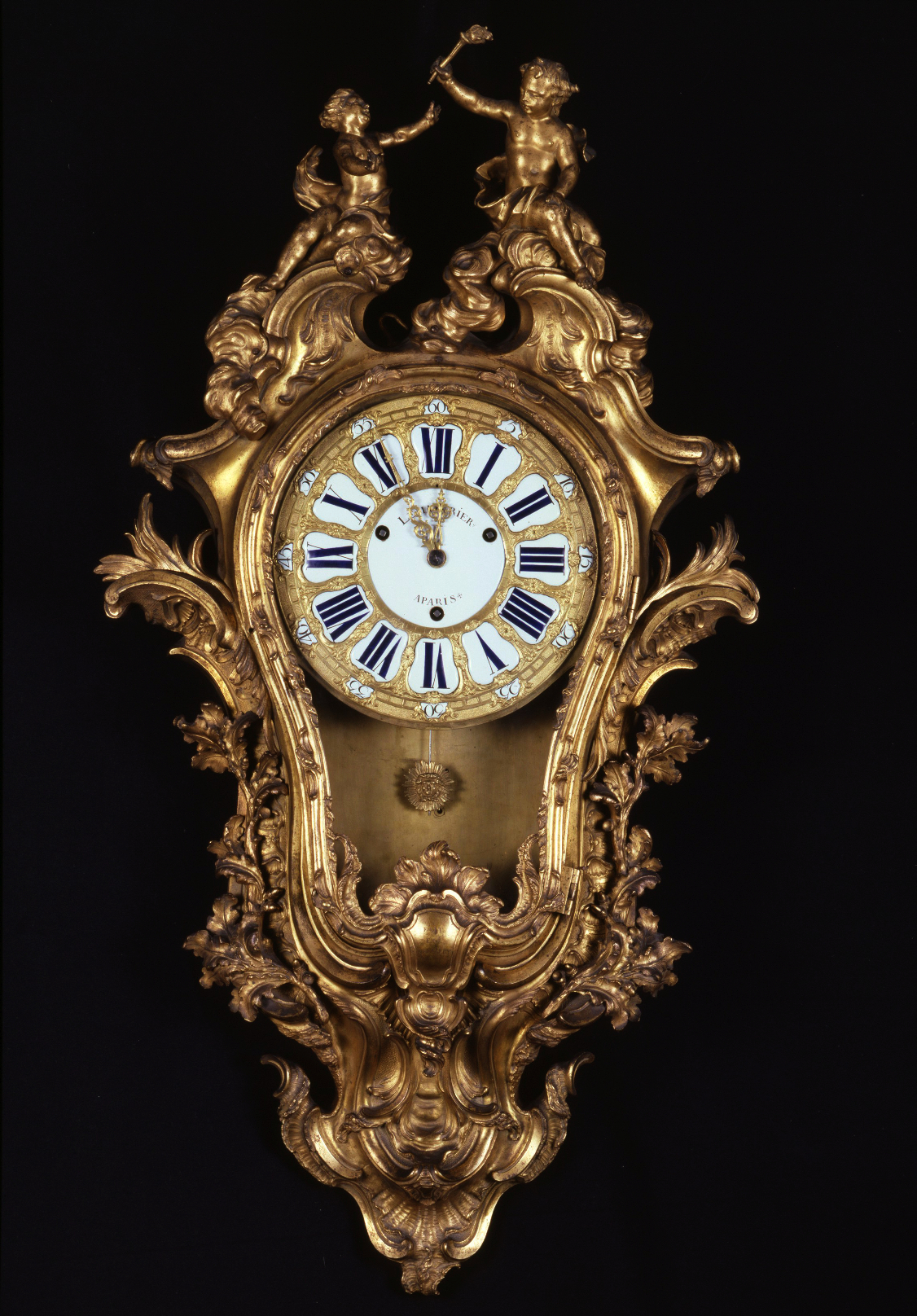
- Paris, c. 1750
- Bronze
- Inv. 604
Cartel clock
The circular face in richly decorated enamel plaques and the two hands in superbly detailed openwork are the visible part of the art of the master clock-maker who designed and produced the mechanism of this exceptional work of art. The outstanding frame by Jacques Caffieri – the son and father of sculptors and bronze-makers – reveals the full scope of his talent, which rivalled that of Charles Cressent in applying bronze to decorate objets d’art.
Like Cressent, Caffieri’s style still often shows the strong influence of the Régence style, clearly visible in this piece, where symmetry dominates even though the sculptures at the top already reveal the rocaille taste that was a feature of that period. This can be observed throughout the piece, especially the two figures of young children at the very top, sculpted in-the-round and forming a scene of great elegance and movement. The shape of this cartel clock, which was called cartel d’applique at the time, suggests the corbels which originally held table clocks that were set on walls. This is particularly evident in the way that the lower part of the frame extends to create a triangular end.
Rudolfo Khan Collection. Acquired by Calouste Gulbenkian from Duveen, Paris, May 1910.
H. 115 cm; W. 63 cm
Lisbon 2001
Calouste Gulbenkian Museum. Lisbon: Calouste Gulbenkian Museum, 2001, p. 125, cat. 99.